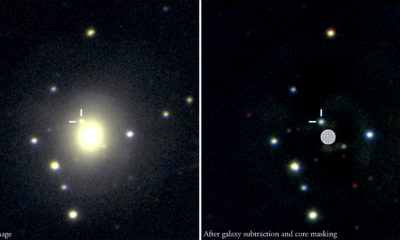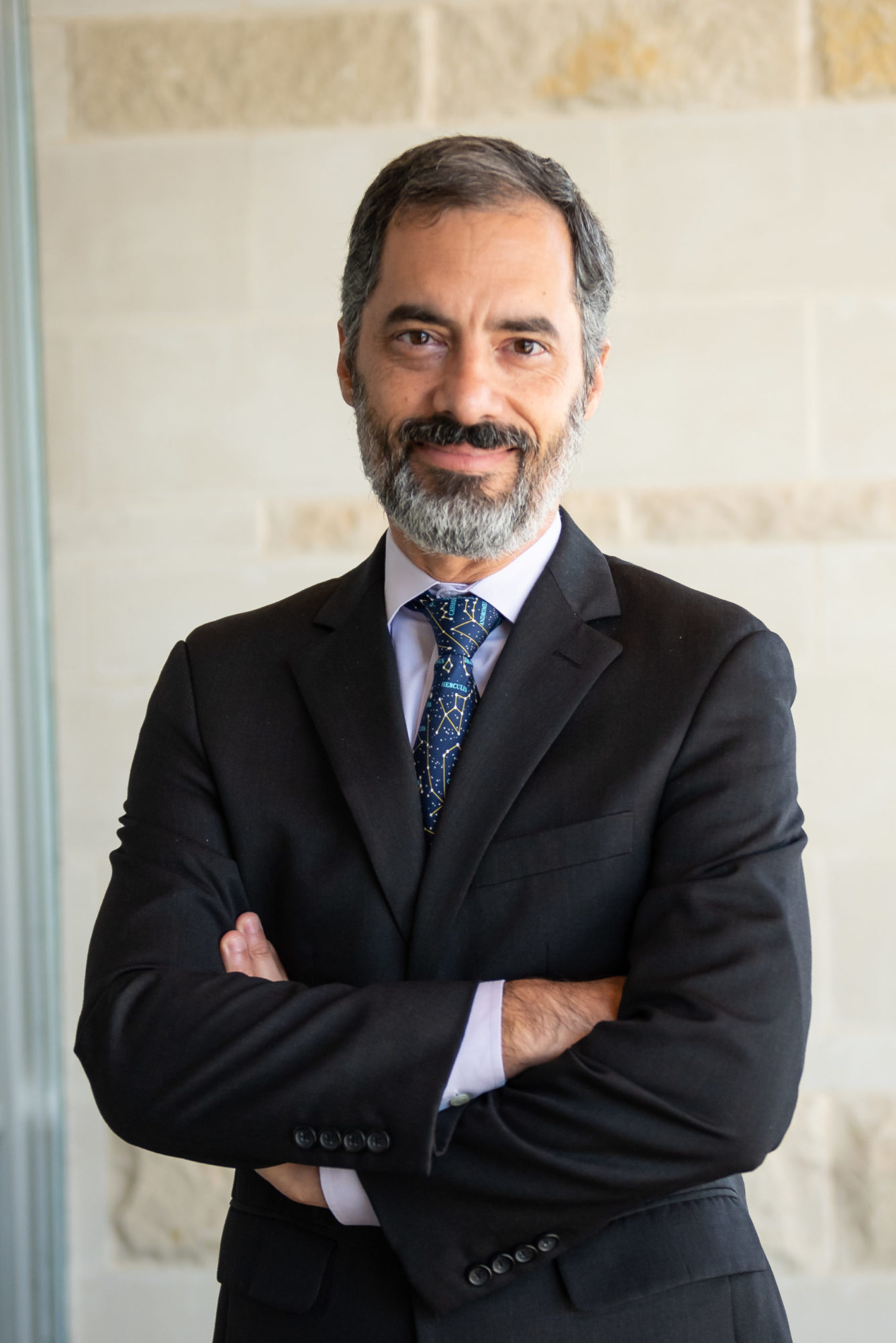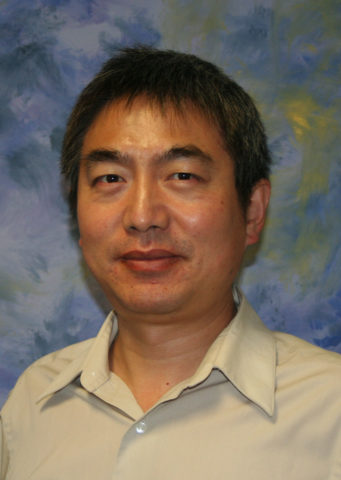Texas A&M Astronomers Play Key Collaborative Roles in Neutron Star Collision Imaging and Analyses
COLLEGE STATION —
About 130 million years ago in the galaxy NGC 4993, a pair of neutron stars collided as a result of the slow but inexorable decay of their orbits, as predicted by Albert Einstein’s general theory of relativity. The cosmic collision of these objects, similar to the Sun in mass but with densities of a billion tons per teaspoon, set up ripples in space-time that raced outward at the speed of light. The glowing aftermath of the event, rich in heavy radioactive elements, is similar to a supernova but on a smaller scale and is called a kilonova.

(Left:) Color image of the galaxy NGC 4993 — large yellowish object in the center of the frame — and the kilonova — star-like object marked with crosshairs — obtained by the TOROS Collaboration using the T80-South telescope. (Right:) Color image of the same field after digitally subtracting NGC 4993 and enhancing the contrast. (Minimal Credit for Reuse: L. Macri/Texas A&M and the TOROS Collaboration.) 
Dr. Lucas Macri 
Dr. Jennifer Marshall 
Nicholas B. Suntzeff 
Dr. Darren DePoy 
Dr. Lifan Wang
Read more on today’s announcement and its broader significance in the official press releases from LIGO/Virgo and DES/Fermilab, which include additional images along with animations and videos. For more information about Texas A&M astronomy, visit Astronomy Research Group. # # # # # # # # # # About Research at Texas A&M University: As one of the world’s leading research institutions, Texas A&M is at the forefront in making significant contributions to scholarship and discovery, including that of science and technology. Research conducted at Texas A&M represented annual expenditures of more than $892.7 million in fiscal year 2016. Texas A&M ranked in the top 20 of the National Science Foundation’s Higher Education Research and Development survey (2015), based on expenditures of more than $866.6 million in fiscal year 2015. Texas A&M’s research creates new knowledge that provides basic, fundamental and applied contributions resulting, in many cases, in economic benefits to the state, nation and world. To learn more, visit http://research.tamu.edu. -aTm- Contact: Shana Hutchins, (979) 862-1237 or shutchins@science.tamu.edu, Dr. Lucas Macri, (979) 845-7362 or lmacri@tamu.edu, Dr. Jennifer Marshall, (979) 862-2782 or marshall@physics.tamu.edu, or Dr. Lifan Wang, (979) 845-4881 or lifan@exchange.tamu.edu
The post Texas A&M Astronomers Play Key Collaborative Roles in Neutron Star Collision Imaging and Analyses appeared first on College of Science.






Read more on today’s announcement and its broader significance in the official press releases from LIGO/Virgo and DES/Fermilab, which include additional images along with animations and videos. For more information about Texas A&M astronomy, visit Astronomy Research Group. # # # # # # # # # # About Research at Texas A&M University: As one of the world’s leading research institutions, Texas A&M is at the forefront in making significant contributions to scholarship and discovery, including that of science and technology. Research conducted at Texas A&M represented annual expenditures of more than $892.7 million in fiscal year 2016. Texas A&M ranked in the top 20 of the National Science Foundation’s Higher Education Research and Development survey (2015), based on expenditures of more than $866.6 million in fiscal year 2015. Texas A&M’s research creates new knowledge that provides basic, fundamental and applied contributions resulting, in many cases, in economic benefits to the state, nation and world. To learn more, visit http://research.tamu.edu. -aTm- Contact: Shana Hutchins, (979) 862-1237 or shutchins@science.tamu.edu, Dr. Lucas Macri, (979) 845-7362 or lmacri@tamu.edu, Dr. Jennifer Marshall, (979) 862-2782 or marshall@physics.tamu.edu, or Dr. Lifan Wang, (979) 845-4881 or lifan@exchange.tamu.edu
